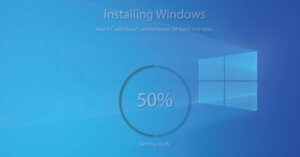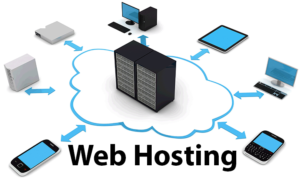Last updated on August 29, 2017
It is commonly held that open source scripts like the WordPress are vulnerable to hacks and attacks. Although this may not be entirely true, there are definitely certain ways to secure your WordPress site.
- To start with, you can try to secure the login page. This will help you to prevent forcible attacks. You can access the backend from the standard WordPress URL. You can simply ass /wp-login after the domain name to reach it. To secure the login page, you may install website lockdown, prohibiting users. So, every time there are attempts at hacking using wrong passwords, the site will automatically get locked down. You will also be notified about this.
- Another convenient way to secure the WordPress website is to use the dual factor authentication feature. This is an excellent security measure because the user is made to provide the login details for two components. The owner will decide which these two components will be; so, it could be a password followed by some secret code or question.
- When you use an email ID to log in instead of a username, it may be safer. This is because usernames are often quite easy to predict. The plugin for WP email login will work as soon as it is activated and it does not need configurations.
- The WP login page can be accessed through the wp-admin or the wp-login.php which is added to any site’s URL. Hackers often try to force their way in when they know the direct URL. They do so through databases of guessed names and passwords. It is therefore better to replace the login URL to eliminate chances of brute force attacks.
- You can play around with passwords and try to change these from time to time. You could make them stronger by introducing both lower and upper case letters and special characters.
- Hackers will find the admin dashboard to be the most attractive part. This should be well protected and if they can hack this, it is a moral victory for the hacker. You can seek to protect wp-admin directory which is the core of any WordPress site. When this is breached, your site gets affected. So, you can protect it by passwords. The site owner can access this dashboard using two passwords, one for the login page and the other for the admin. To secure the admin, you may get the Password Protect plugin which generates a .ht password file and encrypts it.
- Another easy way to secure a WordPress website is to implement a SSL certificate. This will make sure data transfer is secure between the server and user browsers. So, hackers will not be able to get breach this connection.
- When adding user accounts you should be careful. If you run a WordPress blog where there are many authors, your admin will be accessed by many users. So, you should use plugins like Force Strong Passwords to ensure that user passwords are secure.
- When you install WordPress, you must remember not to use “admin” as your account username. These are easy to guess for hackers. Once they have your password, they are good to go. The iThemes Security is a plugin designed to prevent such attempts.
- When you want additional security for your WordPress site, you can monitor changes to files through plugins like iThemes Security or Wordfence.
- Since site data is stored in the databases, you need to secure this to secure the site. You can change the wp-table prefix to a unique name when you are installing WordPress. When you use the default prefix, the site is vulnerable to injection attacks. When you have installed the site with the default one, you may use plugins to change this like iThemes Security or WP-DBManager.
- Another effective way to secure the WordPress site is to conduct regular backups. Even if you find it secure, there is always scope for improvements. So, maintaining off-site backups is a wise move. This helps you to restore the site to an active state at any point of time.
- You should create strong passwords for the database, making sure there are numbers, upper and lower cases and special characters in them.
- If you can successfully protect the wp-config file which contains vital data about your WordPress, you can protect the blog. Hackers cannot breach if this file is not accessible. You can simply take this file and move it higher than the root directory.
- When the user enjoys admin access to the dashboard, he can edit any file, including the themes and plugins. So, you may disallow file editing to make sure that the hacker which gains admin access cannot edit any file.
- It is also imperative that you connect your server only through SSH or SFTP because of their additional security features. This will guarantee that all files which have been transferred are completely secure.
Your job is to create the directory permissions with care because incorrect permissions may turn fatal, particularly in shared environments. If you can set file permissions to “644” and directory permissions to “755”, you can protect all files.

















Be First to Comment